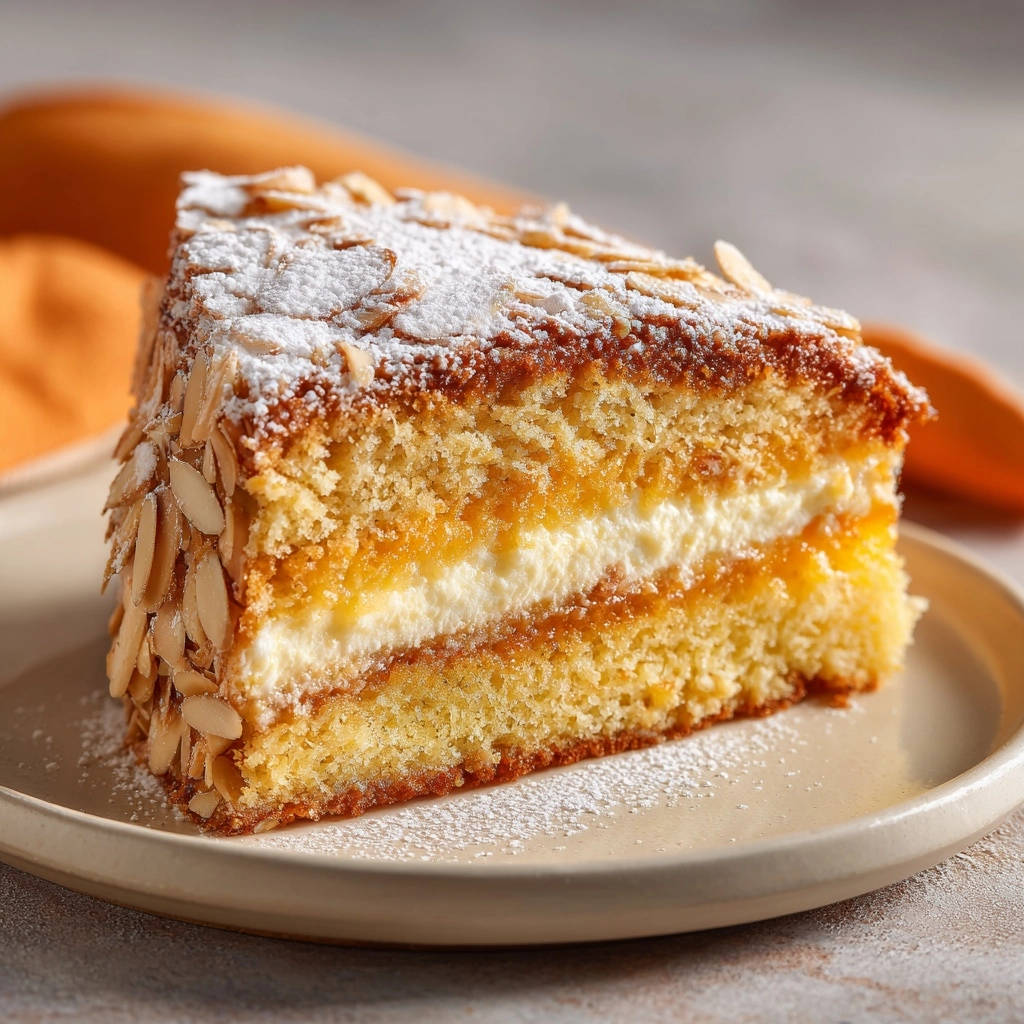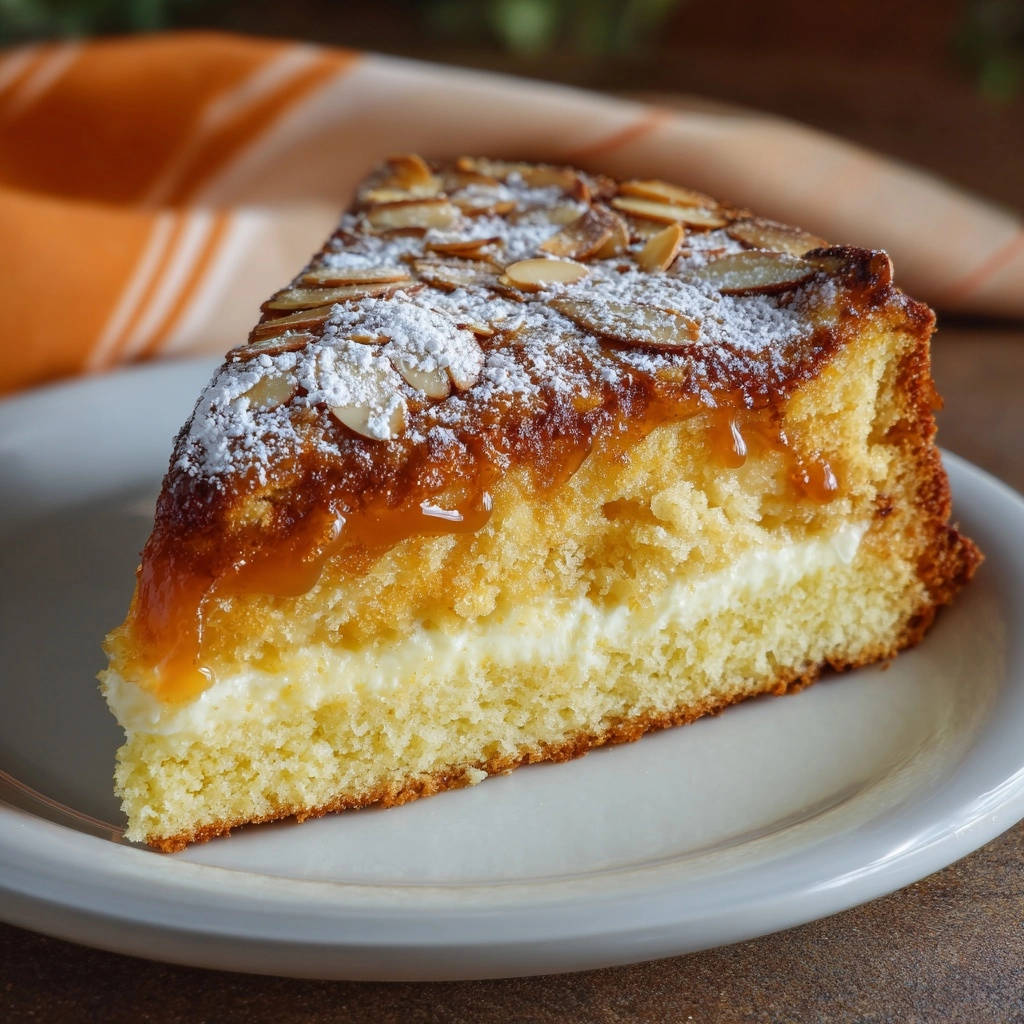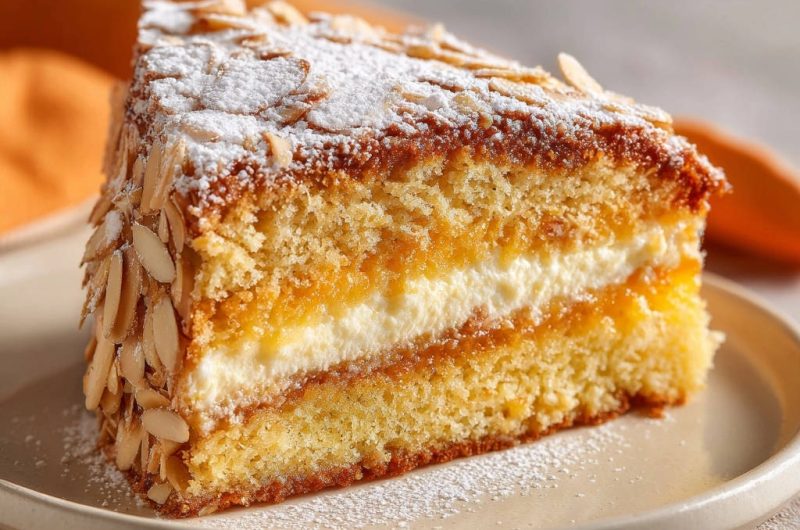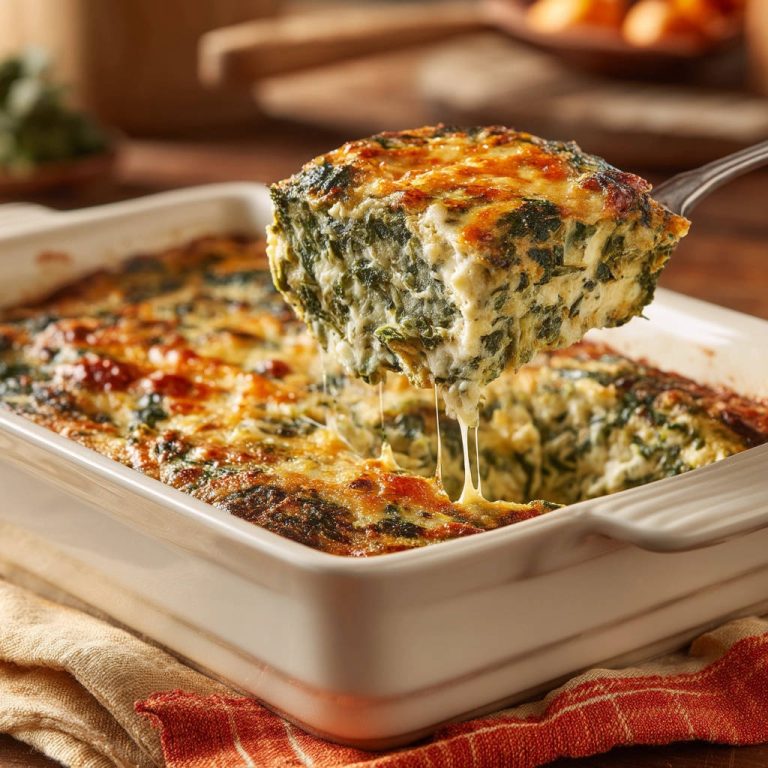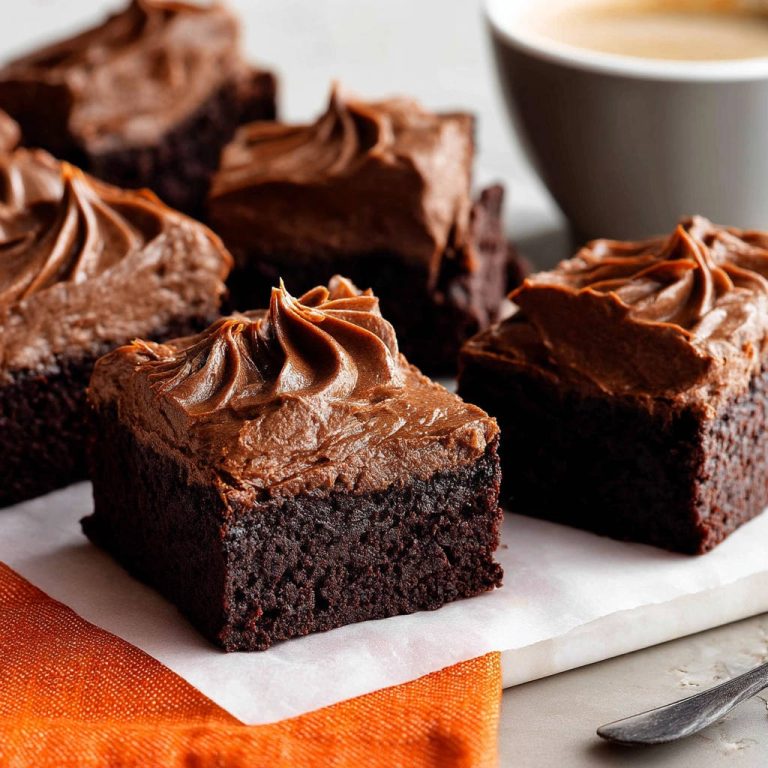There’s nothing quite as disheartening as a cake that promises lightness but delivers density. I’ve been there, perfecting my technique over countless batches, and I’m thrilled to share the secret to an incredibly tender, consistently fluffy Layered Almond Cake that truly melts in your mouth.
This recipe isn’t just about baking; it’s about mastering a delicate balance that guarantees a show-stopping dessert, perfect for any occasion. Get ready to bake a Layered Almond Cake that will earn you rave reviews every single time.
Beyond Basic: Why This Layered Almond Cake Will Be Your New Favorite
This isn’t just another cake; it’s an experience. Every element, from the airy layers to the rich frosting, is designed for pure enjoyment. It’s a testament to how simple techniques yield extraordinary results.
The Melt-in-Your-Mouth Texture Explained
The core of this cake’s exceptional fluffiness lies in precise ingredient temperatures and a specific creaming method. We’ll fully incorporate air into the butter and sugar, creating a light foundation that promises an ethereal crumb.
A Symphony of Flavors: Almond, Apricot, and Cream Cheese
Imagine the subtle nuttiness of almond permeating light cake layers, beautifully contrasted by the bright, slightly tart apricot preserves. This is all embraced by a creamy, tangy cream cheese frosting, creating a harmonious and unforgettable flavor profile.
Impressive Presentation, Simple Execution
Despite its elegant appearance, assembling this cake is remarkably straightforward. My detailed steps ensure even novice bakers can achieve a professional-looking dessert, making it an ideal choice for celebrations or simply a delightful weekend project.
Crafting Culinary Magic: The Essential Ingredients for Your Cake
The quality and preparation of your ingredients are paramount to this Layered Almond Cake’s success. Each component plays a vital role in achieving that perfect texture and flavor.
For the Tender Almond Cake Layers
All-purpose flour provides the necessary structure, while baking powder ensures a beautiful lift. A touch of salt balances the sweetness.
Unsalted butter and granulated sugar, when properly creamed, are crucial for incorporating air and creating a tender crumb. Room temperature is non-negotiable here.
Large eggs bind the ingredients and contribute to the cake’s richness and structure. Using them at room temperature prevents the batter from curdling.
Vanilla extract adds warmth and depth to the almond flavor. Whole milk, also at room temperature, ensures a moist and tender final product.
Apricot Filling: The Bright Heart of the Cake
Apricot preserves or jam provides a vibrant, sweet-tart contrast that cuts through the richness of the cake and frosting. Choose a high-quality preserve for the best flavor.
For a twist, you could explore other fruit fillings like raspberry jam or a zesty lemon curd, offering a new dimension to this delightful dessert.
Decadent Cream Cheese Frosting Perfection
Softened cream cheese and unsalted butter are essential for achieving a smooth, lump-free frosting. Their temperature directly impacts the final texture.
Sifted powdered sugar ensures a silky-smooth consistency without any grittiness. Vanilla extract enhances the classic cream cheese flavor.
A little milk, added gradually, helps achieve the perfect spreadable consistency for your frosting. Adjust it carefully to avoid a runny result.
The Finishing Touch: Sliced Almonds and Dusting Sugar
Sliced almonds provide a delicate crunch and reinforce the almond essence, while also adding visual appeal. Lightly dusting with powdered sugar before serving gives a beautiful, elegant finish.
Your Baking Toolkit: Essential Equipment for Layered Almond Cake Success
Having the right tools at hand makes the baking process smoother and more enjoyable. These essentials will set you up for success with your Layered Almond Cake.
Must-Have Mixing & Baking Gear
Mixing Bowls: You’ll need at least one large and one medium bowl for separating dry and wet ingredients.
Electric Mixer: A stand mixer or handheld electric mixer is vital for properly creaming butter and sugar, which is key to a fluffy cake.
Measuring Cups and Spoons: Accurate measurements are crucial in baking, so ensure you have a reliable set.
8-Inch Round Cake Pans: Two pans are needed for the layered structure. Ensure they are the correct size for even baking.
Parchment Paper: While optional, lining the bottoms with parchment paper guarantees easy release and prevents sticking, especially important for delicate layers.
Assembly & Finishing Touches
Wire Rack: Essential for cooling the cake layers completely, preventing condensation and a soggy bottom.
Offset Spatula or Knife: Ideal for evenly spreading both the apricot preserves and the cream cheese frosting between layers and on the exterior.
Serving Plate or Stand: You’ll need a stable surface to assemble and present your beautiful Layered Almond Cake.
Step-by-Step Layered Almond Cake Mastery: A Detailed Guide
-
Preparing Your Pans & Dry Ingredients (Steps 1-2)
Start by preheating your oven to 350°F (175°C). Properly preparing your cake pans is crucial: grease them thoroughly, then lightly flour, ensuring no spots are missed. For extra peace of mind and easy release, consider lining the bottoms with parchment paper.
In a medium bowl, whisk together the all-purpose flour, baking powder, and salt. Whisking ensures these dry ingredients are evenly distributed, so your cake rises uniformly.
-
The “Secret” to Fluffy Cake: Creaming & Mixing (Steps 3-5)
In a large bowl, using your electric mixer, beat the softened unsalted butter and granulated sugar together on medium-high speed. This creaming process should take 3 to 5 minutes, until the mixture transforms into a very pale, visibly fluffy consistency. This step is critical because it incorporates air into the butter, creating pockets that will expand during baking, resulting in a wonderfully light texture.
Next, beat in the large eggs one at a time. Mix well after each addition to fully incorporate the egg without deflating the air you’ve built up. Stir in the vanilla extract, which deepens the cake’s flavor.
Now, gradually add the whisked dry ingredients alternately with the room temperature milk to the butter mixture, beginning and ending with the dry ingredients. Mix on low speed, and stop the moment you no longer see streaks of flour. Overmixing at this stage is the enemy of a tender cake, as it develops gluten, leading to a tough, dense result.
-
Baking and Cooling Your Perfect Layers (Steps 6-8)
Divide the perfectly mixed batter evenly between your two prepared cake pans. Even distribution ensures both layers bake uniformly.
Bake for 25 to 30 minutes, or until a wooden skewer or toothpick inserted into the center of each cake comes out clean. This is the surest sign of doneness.
Once baked, let the cakes cool in their pans for 10 minutes. This allows them to firm up slightly before you invert them onto a wire rack. Cooling completely on the wire rack is vital before frosting; a warm cake will melt your beautiful cream cheese frosting.
-
Whipping Up the Dreamy Cream Cheese Frosting (Step 9)
While your cake layers are cooling, prepare the indulgent cream cheese frosting. In a large bowl, beat the softened cream cheese and softened butter together until the mixture is completely smooth and creamy. This prevents any lumps in your frosting.
Gradually add the sifted powdered sugar, beating until it is fully incorporated and the frosting is light and fluffy. Sifting prevents lumps and ensures a smooth finish. Stir in the vanilla extract for enhanced flavor.
If your frosting seems too thick, add milk one tablespoon at a time, beating until you reach your desired consistency. Be cautious here; a little goes a long way.
-
Assembling Your Stunning Layered Almond Cake (Steps 10-15)
Once your cake layers are completely cool, you can begin assembling. Place one cake layer on your chosen serving plate. Evenly spread half of the apricot preserves over the top of this layer, right to the edges.
Carefully spread half of the prepared cream cheese frosting over the apricot layer. Use an offset spatula for a smooth, even application.
Gently place the second cake layer on top of the frosted first layer. Spread the remaining apricot preserves evenly over this top layer, creating another vibrant fruit interlude.
Finally, spread the remaining cream cheese frosting over the top of the second apricot layer, covering the top and gracefully smoothing it around the sides of the cake. This creates a beautiful canvas for your garnish.
Gently press the sliced almonds around the sides of the cake. They will adhere easily to the frosting, creating a lovely textural contrast and a professional look. Lightly dust the very top of the cake with powdered sugar just before serving for an elegant final touch.
Chef’s Secrets: Elevate Your Layered Almond Cake Game
Achieving bakery-quality results with your Layered Almond Cake involves a few simple, yet impactful, pro tips.
-
Mastering Room Temperature Ingredients
This is truly fundamental for any cake. Room temperature butter, eggs, and milk emulsify better, meaning they combine smoothly and evenly with the other ingredients. This creates a cohesive batter that traps air more efficiently, contributing significantly to a consistently fluffy cake texture.
-
The Art of Not Overmixing
Once you add the dry ingredients, mix just until combined. As noted in the steps, stop mixing the instant you no longer see streaks of flour. Overmixing develops gluten, which makes your cake tough and dense, counteracting all your efforts for fluffiness. Gentle folding is often best at this stage.
-
Achieving Smooth Frosting Finesse
Ensure both your cream cheese and butter are perfectly softened, but not melted, for a truly smooth and lump-free frosting. Sifting the powdered sugar before adding it is another non-negotiable step; it removes any small clumps, guaranteeing that desired silky-smooth finish.
-
Perfecting Almond Adhesion for a Professional Look
To ensure your sliced almonds stick beautifully to the sides of the cake, make sure your frosting isn’t too firm. If it’s very stiff, the almonds might not adhere well. Gently press them onto the sides, working your way around the cake for a clean, even application. This adds both visual appeal and a delightful crunch.
Solving Baking Dilemmas: Common Layered Almond Cake Problems & Fixes
Even experienced bakers encounter challenges. Here are common issues with Layered Almond Cake and how to troubleshoot them.
Why Is My Cake Dense or Dry?
The most common culprit for a dense cake is overmixing the batter once the flour is added. Too much mixing develops gluten, leading to a tough texture. Another reason could be inaccurate flour measurement, using too much flour, or a baking temperature that’s too low, causing the cake to dry out before it can properly rise and set.
My Cake Sank in the Middle!
A sunken cake often indicates it was underbaked; the structure wasn’t fully set when removed from the oven. Opening the oven door too early during baking, especially in the first two-thirds of the baking time, can also cause a sudden temperature drop and collapse. Additionally, too much leavening (baking powder) or using old, ineffective leavening can lead to initial over-rising followed by a collapse.
Frosting Is Too Runny or Stiff
If your frosting is too runny, your butter and cream cheese might have been too warm, or you added too much liquid (milk). To fix, try chilling it briefly, then beating again, or gradually adding more sifted powdered sugar. If it’s too stiff, your butter/cream cheese might have been too cold, or you didn’t add enough liquid. Gradually beat in tiny amounts of milk until it softens to the right consistency.
Almonds Won’t Stick to the Sides
If your sliced almonds aren’t adhering, it’s likely because the frosting on the sides of the cake is too firm or dry. Ensure the cake isn’t too cold when you apply the almonds. A lightly tacky frosting allows for better adhesion. You can gently press them into the frosting, or use a slightly warmed offset spatula to lightly soften the outer layer of frosting before pressing the almonds on.
Enjoying Your Creation: Serving, Storing & Make-Ahead Tips
Maximizing the deliciousness of your Layered Almond Cake involves knowing how to serve and store it properly.
Perfect Serving Temperatures & Pairings
For the absolute best flavor and tender texture, allow your Layered Almond Cake to come to room temperature before serving. This softens the frosting and enhances the cake’s aroma. It pairs beautifully with a warm cup of coffee or a delicate cup of tea, making it perfect for an afternoon treat or dessert after dinner. For a special occasion, consider serving it alongside a light dessert wine.
How to Store Leftover Layered Almond Cake
To keep your cake fresh, store any leftovers in an airtight container in the refrigerator. The cream cheese frosting necessitates refrigeration. It will keep well for up to 3-4 days. For optimal enjoyment, let slices sit at room temperature for about 15-20 minutes before serving.
Can You Make Layered Almond Cake Ahead of Time?
Absolutely! This cake is excellent for making ahead. You can bake the cake layers up to 2-3 days in advance; once completely cool, wrap them tightly in plastic wrap and store them at room temperature or freeze for longer storage (up to 2-3 months). The cream cheese frosting can also be made a day in advance and stored in an airtight container in the refrigerator. Simply re-whip it briefly before assembling.
Freezing baked cake layers is a great strategy. Wrap them individually and tightly to prevent freezer burn. Thaw them completely at room temperature before frosting. This makes assembling your stunning Layered Almond Cake a breeze when you’re ready to serve.
Your Layered Almond Cake Questions Answered
Can I Use a Different Fruit Filling?
Yes, absolutely! While apricot is classic, this Layered Almond Cake is wonderfully versatile. Raspberry jam, strawberry preserves, or even a homemade blueberry compote would be delicious. For a brighter, zesty flavor, consider a lemon curd layer. Each fruit will offer a unique delightful twist!
Is There a Gluten-Free Option for This Cake?
Yes, you can adapt this recipe to be gluten-free. Substitute the all-purpose flour with a high-quality gluten-free all-purpose baking blend that contains xanthan gum. You might find the batter slightly thicker, so avoid overmixing. Baking times may vary slightly, so always rely on the skewer test for doneness.
Can I Halve or Double the Recipe?
You can certainly scale this recipe. To halve it, simply divide all ingredients by two and bake in smaller pans (e.g., two 6-inch pans or one 8-inch pan for a single layer cake). For doubling, use two sets of 9-inch pans or larger sheet pans, keeping in mind that oven space and mixing capacity might be a factor. Always adjust baking times accordingly.
What If I Don’t Have Parchment Paper?
While parchment paper is recommended for easy release, you can still achieve non-stick cake layers without it. Generously grease and flour your cake pans, ensuring every crevice is coated. For chocolate cakes, you can even use cocoa powder instead of flour to prevent a white residue. A thorough greasing and flouring creates a barrier that helps prevent sticking.
Ready to Impress? Share Your Layered Almond Cake Masterpiece!
Now that you have the secrets to baking the most consistently fluffy Layered Almond Cake, it’s time to gather your ingredients and start baking. This cake is more than just a dessert; it’s a delightful centerpiece that promises tender layers and rich flavors with every bite. Don’t stop your baking adventure here; if you’re looking for more delicious dessert ideas, be sure to explore our recipe for easy chocolate lava cake or indulge in the comforting sweetness of our classic apple pie recipe that never has a soggy bottom.
We absolutely can’t wait to see your stunning creations! Share your beautiful Layered Almond Cake photos with us on social media using #LayeredAlmondCake and tag us. Happy baking!
Layered Almond Cake: The Secret to Consistently Fluffy Bites
There’s nothing quite as disheartening as a cake that promises lightness but delivers density. I’ve been there, perfecting my technique over countless batches, and I’m thrilled to share the secret to an incredibly tender, consistently fluffy Layered Almond Cake that truly melts in your mouth.
This recipe isn’t just about baking; it’s about mastering a delicate balance that guarantees a show-stopping dessert, perfect for any occasion. Get ready to bake a Layered Almond Cake that will earn you rave reviews every single time.
Beyond Basic: Why This Layered Almond Cake Will Be Your New Favorite
This isn’t just another cake; it’s an experience. Every element, from the airy layers to the rich frosting, is designed for pure enjoyment. It’s a testament to how simple techniques yield extraordinary results.
The Melt-in-Your-Mouth Texture Explained
The core of this cake’s exceptional fluffiness lies in precise ingredient temperatures and a specific creaming method. We’ll fully incorporate air into the butter and sugar, creating a light foundation that promises an ethereal crumb.
A Symphony of Flavors: Almond, Apricot, and Cream Cheese
Imagine the subtle nuttiness of almond permeating light cake layers, beautifully contrasted by the bright, slightly tart apricot preserves. This is all embraced by a creamy, tangy cream cheese frosting, creating a harmonious and unforgettable flavor profile.
Impressive Presentation, Simple Execution
Despite its elegant appearance, assembling this cake is remarkably straightforward. My detailed steps ensure even novice bakers can achieve a professional-looking dessert, making it an ideal choice for celebrations or simply a delightful weekend project.
Crafting Culinary Magic: The Essential Ingredients for Your Cake
The quality and preparation of your ingredients are paramount to this Layered Almond Cake’s success. Each component plays a vital role in achieving that perfect texture and flavor.
For the Tender Almond Cake Layers
All-purpose flour provides the necessary structure, while baking powder ensures a beautiful lift. A touch of salt balances the sweetness.
Unsalted butter and granulated sugar, when properly creamed, are crucial for incorporating air and creating a tender crumb. Room temperature is non-negotiable here.
Large eggs bind the ingredients and contribute to the cake’s richness and structure. Using them at room temperature prevents the batter from curdling.
Vanilla extract adds warmth and depth to the almond flavor. Whole milk, also at room temperature, ensures a moist and tender final product.
Apricot Filling: The Bright Heart of the Cake
Apricot preserves or jam provides a vibrant, sweet-tart contrast that cuts through the richness of the cake and frosting. Choose a high-quality preserve for the best flavor.
For a twist, you could explore other fruit fillings like raspberry jam or a zesty lemon curd, offering a new dimension to this delightful dessert.
Decadent Cream Cheese Frosting Perfection
Softened cream cheese and unsalted butter are essential for achieving a smooth, lump-free frosting. Their temperature directly impacts the final texture.
Sifted powdered sugar ensures a silky-smooth consistency without any grittiness. Vanilla extract enhances the classic cream cheese flavor.
A little milk, added gradually, helps achieve the perfect spreadable consistency for your frosting. Adjust it carefully to avoid a runny result.
The Finishing Touch: Sliced Almonds and Dusting Sugar
Sliced almonds provide a delicate crunch and reinforce the almond essence, while also adding visual appeal. Lightly dusting with powdered sugar before serving gives a beautiful, elegant finish.
Your Baking Toolkit: Essential Equipment for Layered Almond Cake Success
Having the right tools at hand makes the baking process smoother and more enjoyable. These essentials will set you up for success with your Layered Almond Cake.
Must-Have Mixing & Baking Gear
Mixing Bowls: You’ll need at least one large and one medium bowl for separating dry and wet ingredients.
Electric Mixer: A stand mixer or handheld electric mixer is vital for properly creaming butter and sugar, which is key to a fluffy cake.
Measuring Cups and Spoons: Accurate measurements are crucial in baking, so ensure you have a reliable set.
8-Inch Round Cake Pans: Two pans are needed for the layered structure. Ensure they are the correct size for even baking.
Parchment Paper: While optional, lining the bottoms with parchment paper guarantees easy release and prevents sticking, especially important for delicate layers.
Assembly & Finishing Touches
Wire Rack: Essential for cooling the cake layers completely, preventing condensation and a soggy bottom.
Offset Spatula or Knife: Ideal for evenly spreading both the apricot preserves and the cream cheese frosting between layers and on the exterior.
Serving Plate or Stand: You’ll need a stable surface to assemble and present your beautiful Layered Almond Cake.
Step-by-Step Layered Almond Cake Mastery: A Detailed Guide
-
Preparing Your Pans & Dry Ingredients (Steps 1-2)
Start by preheating your oven to 350°F (175°C). Properly preparing your cake pans is crucial: grease them thoroughly, then lightly flour, ensuring no spots are missed. For extra peace of mind and easy release, consider lining the bottoms with parchment paper.
In a medium bowl, whisk together the all-purpose flour, baking powder, and salt. Whisking ensures these dry ingredients are evenly distributed, so your cake rises uniformly.
-
The “Secret” to Fluffy Cake: Creaming & Mixing (Steps 3-5)
In a large bowl, using your electric mixer, beat the softened unsalted butter and granulated sugar together on medium-high speed. This creaming process should take 3 to 5 minutes, until the mixture transforms into a very pale, visibly fluffy consistency. This step is critical because it incorporates air into the butter, creating pockets that will expand during baking, resulting in a wonderfully light texture.
Next, beat in the large eggs one at a time. Mix well after each addition to fully incorporate the egg without deflating the air you’ve built up. Stir in the vanilla extract, which deepens the cake’s flavor.
Now, gradually add the whisked dry ingredients alternately with the room temperature milk to the butter mixture, beginning and ending with the dry ingredients. Mix on low speed, and stop the moment you no longer see streaks of flour. Overmixing at this stage is the enemy of a tender cake, as it develops gluten, leading to a tough, dense result.
-
Baking and Cooling Your Perfect Layers (Steps 6-8)
Divide the perfectly mixed batter evenly between your two prepared cake pans. Even distribution ensures both layers bake uniformly.
Bake for 25 to 30 minutes, or until a wooden skewer or toothpick inserted into the center of each cake comes out clean. This is the surest sign of doneness.
Once baked, let the cakes cool in their pans for 10 minutes. This allows them to firm up slightly before you invert them onto a wire rack. Cooling completely on the wire rack is vital before frosting; a warm cake will melt your beautiful cream cheese frosting.
-
Whipping Up the Dreamy Cream Cheese Frosting (Step 9)
While your cake layers are cooling, prepare the indulgent cream cheese frosting. In a large bowl, beat the softened cream cheese and softened butter together until the mixture is completely smooth and creamy. This prevents any lumps in your frosting.
Gradually add the sifted powdered sugar, beating until it is fully incorporated and the frosting is light and fluffy. Sifting prevents lumps and ensures a smooth finish. Stir in the vanilla extract for enhanced flavor.
If your frosting seems too thick, add milk one tablespoon at a time, beating until you reach your desired consistency. Be cautious here; a little goes a long way.
-
Assembling Your Stunning Layered Almond Cake (Steps 10-15)
Once your cake layers are completely cool, you can begin assembling. Place one cake layer on your chosen serving plate. Evenly spread half of the apricot preserves over the top of this layer, right to the edges.
Carefully spread half of the prepared cream cheese frosting over the apricot layer. Use an offset spatula for a smooth, even application.
Gently place the second cake layer on top of the frosted first layer. Spread the remaining apricot preserves evenly over this top layer, creating another vibrant fruit interlude.
Finally, spread the remaining cream cheese frosting over the top of the second apricot layer, covering the top and gracefully smoothing it around the sides of the cake. This creates a beautiful canvas for your garnish.
Gently press the sliced almonds around the sides of the cake. They will adhere easily to the frosting, creating a lovely textural contrast and a professional look. Lightly dust the very top of the cake with powdered sugar just before serving for an elegant final touch.
Chef’s Secrets: Elevate Your Layered Almond Cake Game
Achieving bakery-quality results with your Layered Almond Cake involves a few simple, yet impactful, pro tips.
-
Mastering Room Temperature Ingredients
This is truly fundamental for any cake. Room temperature butter, eggs, and milk emulsify better, meaning they combine smoothly and evenly with the other ingredients. This creates a cohesive batter that traps air more efficiently, contributing significantly to a consistently fluffy cake texture.
-
The Art of Not Overmixing
Once you add the dry ingredients, mix just until combined. As noted in the steps, stop mixing the instant you no longer see streaks of flour. Overmixing develops gluten, which makes your cake tough and dense, counteracting all your efforts for fluffiness. Gentle folding is often best at this stage.
-
Achieving Smooth Frosting Finesse
Ensure both your cream cheese and butter are perfectly softened, but not melted, for a truly smooth and lump-free frosting. Sifting the powdered sugar before adding it is another non-negotiable step; it removes any small clumps, guaranteeing that desired silky-smooth finish.
-
Perfecting Almond Adhesion for a Professional Look
To ensure your sliced almonds stick beautifully to the sides of the cake, make sure your frosting isn’t too firm. If it’s very stiff, the almonds might not adhere well. Gently press them onto the sides, working your way around the cake for a clean, even application. This adds both visual appeal and a delightful crunch.
Solving Baking Dilemmas: Common Layered Almond Cake Problems & Fixes
Even experienced bakers encounter challenges. Here are common issues with Layered Almond Cake and how to troubleshoot them.
Why Is My Cake Dense or Dry?
The most common culprit for a dense cake is overmixing the batter once the flour is added. Too much mixing develops gluten, leading to a tough texture. Another reason could be inaccurate flour measurement, using too much flour, or a baking temperature that’s too low, causing the cake to dry out before it can properly rise and set.
My Cake Sank in the Middle!
A sunken cake often indicates it was underbaked; the structure wasn’t fully set when removed from the oven. Opening the oven door too early during baking, especially in the first two-thirds of the baking time, can also cause a sudden temperature drop and collapse. Additionally, too much leavening (baking powder) or using old, ineffective leavening can lead to initial over-rising followed by a collapse.
Frosting Is Too Runny or Stiff
If your frosting is too runny, your butter and cream cheese might have been too warm, or you added too much liquid (milk). To fix, try chilling it briefly, then beating again, or gradually adding more sifted powdered sugar. If it’s too stiff, your butter/cream cheese might have been too cold, or you didn’t add enough liquid. Gradually beat in tiny amounts of milk until it softens to the right consistency.
Almonds Won’t Stick to the Sides
If your sliced almonds aren’t adhering, it’s likely because the frosting on the sides of the cake is too firm or dry. Ensure the cake isn’t too cold when you apply the almonds. A lightly tacky frosting allows for better adhesion. You can gently press them into the frosting, or use a slightly warmed offset spatula to lightly soften the outer layer of frosting before pressing the almonds on.
Enjoying Your Creation: Serving, Storing & Make-Ahead Tips
Maximizing the deliciousness of your Layered Almond Cake involves knowing how to serve and store it properly.
Perfect Serving Temperatures & Pairings
For the absolute best flavor and tender texture, allow your Layered Almond Cake to come to room temperature before serving. This softens the frosting and enhances the cake’s aroma. It pairs beautifully with a warm cup of coffee or a delicate cup of tea, making it perfect for an afternoon treat or dessert after dinner. For a special occasion, consider serving it alongside a light dessert wine.
How to Store Leftover Layered Almond Cake
To keep your cake fresh, store any leftovers in an airtight container in the refrigerator. The cream cheese frosting necessitates refrigeration. It will keep well for up to 3-4 days. For optimal enjoyment, let slices sit at room temperature for about 15-20 minutes before serving.
Can You Make Layered Almond Cake Ahead of Time?
Absolutely! This cake is excellent for making ahead. You can bake the cake layers up to 2-3 days in advance; once completely cool, wrap them tightly in plastic wrap and store them at room temperature or freeze for longer storage (up to 2-3 months). The cream cheese frosting can also be made a day in advance and stored in an airtight container in the refrigerator. Simply re-whip it briefly before assembling.
Freezing baked cake layers is a great strategy. Wrap them individually and tightly to prevent freezer burn. Thaw them completely at room temperature before frosting. This makes assembling your stunning Layered Almond Cake a breeze when you’re ready to serve.
Your Layered Almond Cake Questions Answered
Can I Use a Different Fruit Filling?
Yes, absolutely! While apricot is classic, this Layered Almond Cake is wonderfully versatile. Raspberry jam, strawberry preserves, or even a homemade blueberry compote would be delicious. For a brighter, zesty flavor, consider a lemon curd layer. Each fruit will offer a unique delightful twist!
Is There a Gluten-Free Option for This Cake?
Yes, you can adapt this recipe to be gluten-free. Substitute the all-purpose flour with a high-quality gluten-free all-purpose baking blend that contains xanthan gum. You might find the batter slightly thicker, so avoid overmixing. Baking times may vary slightly, so always rely on the skewer test for doneness.
Can I Halve or Double the Recipe?
You can certainly scale this recipe. To halve it, simply divide all ingredients by two and bake in smaller pans (e.g., two 6-inch pans or one 8-inch pan for a single layer cake). For doubling, use two sets of 9-inch pans or larger sheet pans, keeping in mind that oven space and mixing capacity might be a factor. Always adjust baking times accordingly.
What If I Don’t Have Parchment Paper?
While parchment paper is recommended for easy release, you can still achieve non-stick cake layers without it. Generously grease and flour your cake pans, ensuring every crevice is coated. For chocolate cakes, you can even use cocoa powder instead of flour to prevent a white residue. A thorough greasing and flouring creates a barrier that helps prevent sticking.
Ready to Impress? Share Your Layered Almond Cake Masterpiece!
Now that you have the secrets to baking the most consistently fluffy Layered Almond Cake, it’s time to gather your ingredients and start baking. This cake is more than just a dessert; it’s a delightful centerpiece that promises tender layers and rich flavors with every bite. Don’t stop your baking adventure here; if you’re looking for more delicious dessert ideas, be sure to explore our recipe for easy chocolate lava cake or indulge in the comforting sweetness of our classic apple pie recipe that never has a soggy bottom.
We absolutely can’t wait to see your stunning creations! Share your beautiful Layered Almond Cake photos with us on social media using #LayeredAlmondCake and tag us. Happy baking!
Layered Almond Cake
Course: DessertCuisine: American CuisineDifficulty: easy8
slices30
minutes25
minutes60
minutesAmerican Cuisine
Ingredients
For the Cake:
2 and 1/4 cups all-purpose flour
1 and 1/2 teaspoons baking powder
1/2 teaspoon salt
1 cup (2 sticks) unsalted butter, softened
1 and 3/4 cups granulated sugar
4 large eggs, room temperature
1 teaspoon vanilla extract
1 cup whole milk, room temperature
For the Apricot Filling:
1 cup apricot preserves or jam
For the Cream Cheese Frosting:
8 ounces cream cheese, softened
1/2 cup (1 stick) unsalted butter, softened
4 cups powdered sugar, sifted
1 teaspoon vanilla extract
1 to 2 tablespoons milk (optional, for consistency)
For Garnish:
1 cup sliced almonds
1 tablespoon powdered sugar
Directions
- Preheat your oven to 350F (175C). Grease and flour two 8-inch round cake pans. Line the bottoms with parchment paper if desired.
- In a medium bowl, whisk together the flour, baking powder, and salt. Set aside.
- In a large bowl, using an electric mixer, beat the softened butter and granulated sugar together on medium-high speed for 3 to 5 minutes, until the mixture is very pale in color and visibly fluffy. This step is crucial for incorporating air, which helps create a light texture.
- Beat in the eggs one at a time, mixing well after each addition. Stir in the vanilla extract.
- Gradually add the dry ingredients alternately with the milk to the butter mixture, beginning and ending with the dry ingredients. Mix on low speed just until combined after each addition. The moment you no longer see streaks of flour, stop mixing. Overmixing develops gluten, which leads to a tough, dense cake.
- Divide the batter evenly between the two prepared cake pans.
- Bake for 25 to 30 minutes, or until a wooden skewer inserted into the center comes out clean.
- Let the cakes cool in the pans for 10 minutes, then invert them onto a wire rack to cool completely.
- While the cakes cool, prepare the cream cheese frosting: In a large bowl, beat the softened cream cheese and butter together until smooth and creamy. Gradually add the sifted powdered sugar, beating until fully incorporated. Stir in the vanilla extract. If the frosting is too thick, add milk one tablespoon at a time until desired consistency is reached.
- To assemble the cake: Once the cakes are completely cool, place one cake layer on your serving plate. Spread half of the apricot preserves evenly over the top.
- Carefully spread half of the cream cheese frosting over the apricot layer.
- Place the second cake layer on top. Spread the remaining apricot preserves over this layer.
- Spread the remaining cream cheese frosting over the top of the apricot layer, covering the top and sides of the cake.
- Gently press the sliced almonds around the sides of the cake.
- Lightly dust the top of the cake with powdered sugar before serving.
Notes
- Includes crucial tips for achieving a consistently light and tender cake texture.

